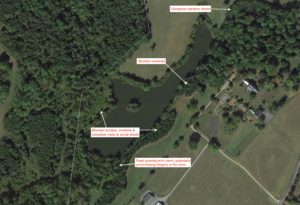Deciding whether to clear, and what comes next
Clearing and reclamation projects are an important part of what we do. However, as with most things in life it’s not quite as simple as it sounds. The actual removal of trees and plant material is straightforward, but a lot of thought should be given to what comes next. Two key components to consider are:
- Why are you clearing? You undertook the clearing project for a reason, and keeping your end goal in sharp focus will help inform your decisions along the way. For example, if you’re clearing to improve access, make sure you know where the road is going, and what associated clearing is needed. Have you cleared enough area to account for ditching, culverts, and run-off? Will the sides of the road be maintainable with the current grade, or is additional work needed? If you are clearing to control invasive or volunteer species, how will the area be maintained to prevent regrowth?
- What is your stabilization plan? Do you have a soil and erosion plan in place, and how are you going to stabilize the area? Managing erosion and taking the necessary control measures are crucial – both in terms of meeting local regulatory requirements, as well as maintaining the integrity of your project. Important consideration must be given to slopes and areas adjacent to bodies of water. If a major weather event occurs will your project wash out? And if it does, are measures in place to prevent it from flowing into a waterway?
Timing
Similar consideration should also be given to timing. What are you planting in your cleared areas, and what time of year is it? Different grasses, trees, food plot forages, etc. all have their own ideal growing seasons. If it’s possible to time your clearing project accordingly you will be a happier person for it. And if your project is time sensitive and you can’t time it accordingly be sure to consult your contractor and/or suppliers to choose the next best option.
Example from the field
Below is an example of a recent pond clearing project we undertook. Our clients had just purchased a historic farm with a 5.5 acre pond next to the house. Unfortunately volunteer Cedars and invasive vines, Ailanthus, and Autumn Olive had encroached to the point where they couldn’t see the pond from the house, nor could they easily access the water to even put a canoe or small boat in. Our clients and their architects wanted clear views from the house and pool, and easy access for their young family to swim, fish, and boat in the lake. So how to proceed?
Check back for Part 2 of this post for more on our next steps.


